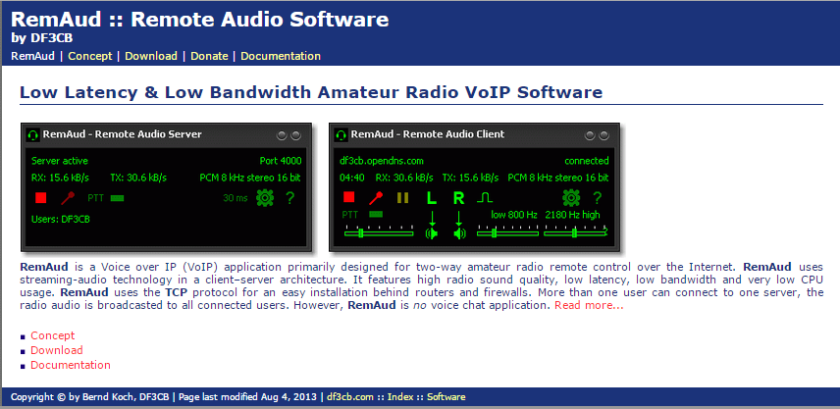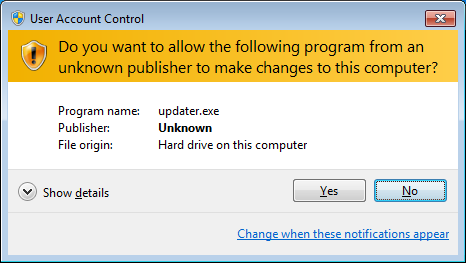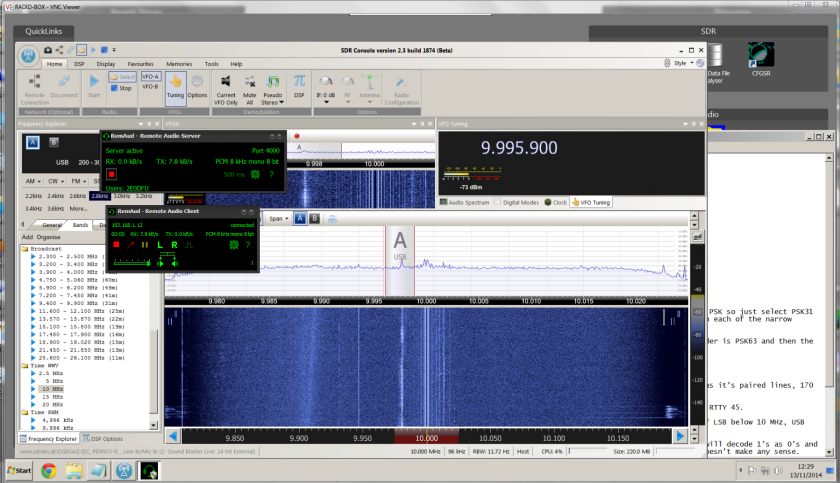After fine tuning VAC so the audio from the radio is available to Fldigi or whatever the chosen application is to decode digi-mode transmissions, there is still a need to be able to hear what is going on.
I’ve had the SoftRock tuned to middle eastern AM voice transmissions which is a good way of testing various functions of the rig. Equally, when trying to identify the transmission mode be it CW (morse), PSK, RTTY although you eventually learn the characteristic shapes of each within the sometimes very messy waterfall, each mode has a distinct audio tone and being able to hear it is a massive help.
Now remembering that all our audio is whizzing around on the virtual audio bus, you need a way to tap into it and turn it back into something you can hear through the speakers of whatever device you are accessing the radio from.
Enter RemAud http://www.df3cb.com/remaud/
Again, for a free piece of software it provides a fantastic feature which solves the problem nicely.
The server element is installed at the point of origin for the audio, in our case the Radio-Box where VAC has our audio.
The client element is installed on the device(s) you wish to access that audio on.
Tell the server what it’s audio input is, that being VAC, create a username and password and that’s it.
On the client side, give it the IP address of the RemAud server, put in your username and password and press go.
Now remember, any audio that’s being streamed isn’t going to be as true to the original source due to network latency and so forth, but once again, for free it does the job nicely.
After playing with things for a few days I had a few issues with RemAud server, which can become unstable if something crashes out in the background. The result is extremely choppy audio on the client end.
The only solution is a reboot of the server and client machines. Not ideal but it fixes the problem if experienced.
Having double checked everything by tuning to an AM voice broadcast signal I’m happy everything’s as good as it can be. When using a Cat-5 link to my laptop everything’s crystal clear. There is a degree of latency when using a WiFi connection but then it’s only a 2.4GHz 802.11g connection and there’s a hell of a lot of BT and Sky boxes in the neighbourhood banging out all sorts of signals all over the spectrum which are getting in the way.
The solution would be to shift to a 5GHz 802.11n wireless network. At the minute my laptop doesn’t have the necessary wireless card to support this standard and it can’t be retro fitted. New laptop time!
The Wireless Acces Point solution of choice would be the XClaim Xi-1 providing 300mbps for $89
http://www.xclaimwireless.com/
As an interim measure I’ve dug out an old Edimax WAP and set it up with a dedicated SSID that is only used for remote radio access and have shifted the broadcast frequency as far away from anything else on the spectrum. Far from ideal but it’ll do for the minute.
Anyway, we digress! I’ve been having a problem with Microsoft wanting to take over the world and prevent applications running without UAC stepping in and wanting verification of the action.
You know exactly what I mean don’t you?
This was happening every time I was starting RemAud on the Radio-Box. Now fully understanding what UAC does, I know why it steps in BUT what I want to run on my machine is a trusted process and I want it to run without UAC stepping in every time and if possible from machine start up so that on remote access you don’t have to go looking to start it, it’s already there.
Strangely, this becomes a bigger issue over VNC because on occasions the screen formatting gets screwed up and you can’t select Yes or close the UAC dialogue box to try again.
I was hoping that you could create a “whitelist” for UAC but that’s not possible. Extensive use of Google came up with a range of solutions, very few that worked I must stress! I don’t want any 3rd party programs on the Radio-Box as “bloatware” is an issue for me. Call it OCD if you want, but I want neat and streamlined to ensure maximum bang for my (someone else’s!) buck!
I used option number 4 on the following post –
https://www.raymond.cc/blog/task-scheduler-bypass-uac-prompt/
Other similar solutions are available –
http://www.sevenforums.com/tutorials/11949-elevated-program-shortcut-without-uac-prompt-create.html
I’ve placed my shortcut in the Windows 7 startup folder so when the Radio-Box boots RemAud is running instantly and in the background.



